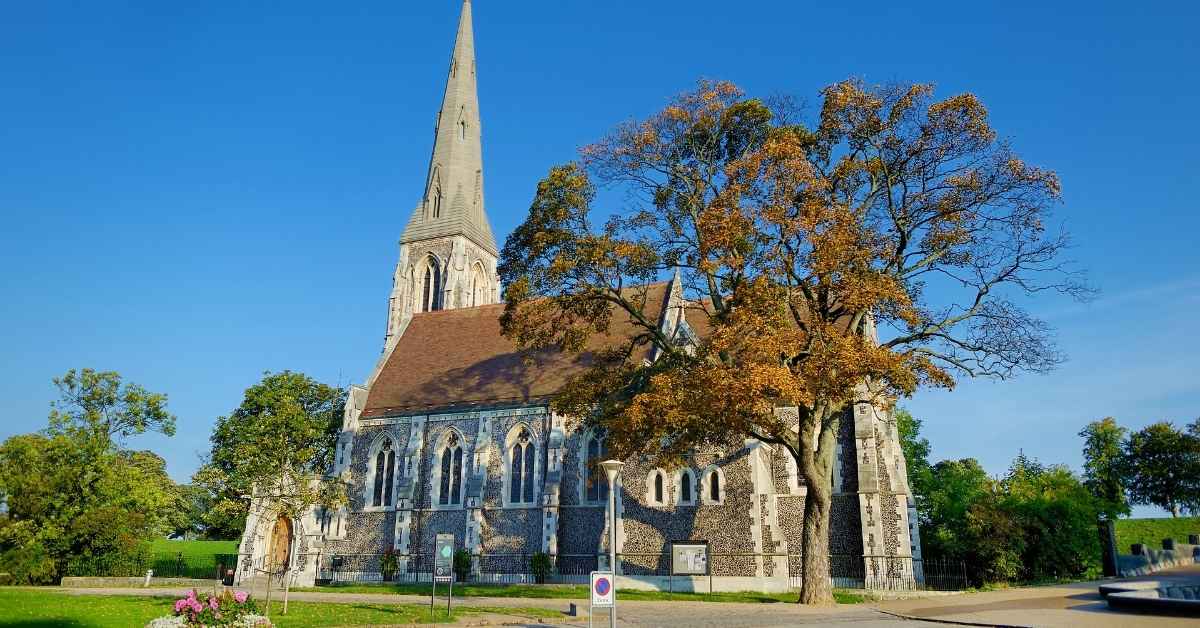Visiting churches in Denmark offers a look into the country’s architectural and spiritual roots. These churches are not just places for worship; they stand as cultural landmarks that showcase Denmark’s journey through time. Many Danish churches, some dating back to the Viking Age, have witnessed major societal shifts.
From the spread of Christianity to the Reformation and beyond, these churches reflect Denmark’s evolving religious and architectural landscape. So, let’s explore some of the most remarkable churches in Denmark and discover what makes them so special.
The Architectural Evolution of Churches in Denmark
The architectural style of Danish churches has changed greatly over the centuries. Early churches were simple wooden structures, reflecting the modest beginnings of Christianity in the region. These buildings were functional and humble, fitting the austere nature of early religious practices.
As Christianity’s influence grew, church architecture became more elaborate. In the 12th century, Romanesque style dominated, with rounded arches and thick walls. These sturdy designs symbolized strength and durability, often featuring detailed stone carvings that showcased the craftsmanship of the era.
Next came the Gothic period, which introduced tall spires, pointed arches, and stunning stained glass windows. This shift mirrored Denmark’s growing wealth during the medieval period. Many churches from this time were funded by wealthy merchants and nobility, making them central landmarks in their communities.
The Reformation in the 16th century brought another transformation. The ornate Catholic churches gave way to simpler, more modest designs in line with Lutheran values. This marked a major change, both in architecture and religious practices, as churches focused more on simplicity and accessibility.
Iconic Churches in Denmark
Denmark is home to several iconic churches, each with its own unique style and history. These churches are not only places of worship but also landmarks that draw visitors from all over the world.
1. Church of Our Lady (Vor Frue Kirke)
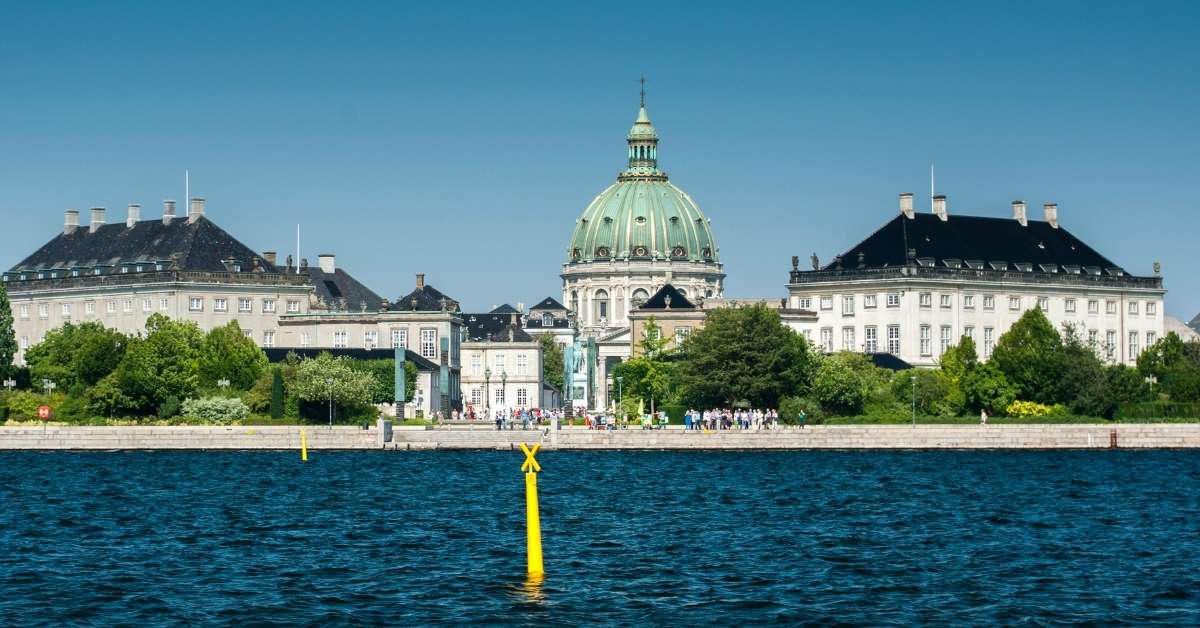
In Copenhagen, the Church of Our Lady stands as a testament to Denmark’s rich religious history. Originally built in the 12th century, it has undergone several renovations, with the most significant being in the 19th century. This neoclassical church is known for its beautiful interior, featuring a stunning altar and impressive artwork.
One of the highlights here is the statue of Christ, created by the famous Danish sculptor Bertel Thorvaldsen. This statue is a serene representation of Christ and is a focal point within the church. You can easily spend some time here, absorbing the peaceful atmosphere and admiring the artwork that adorns the walls.
2. Grundtvig’s Church
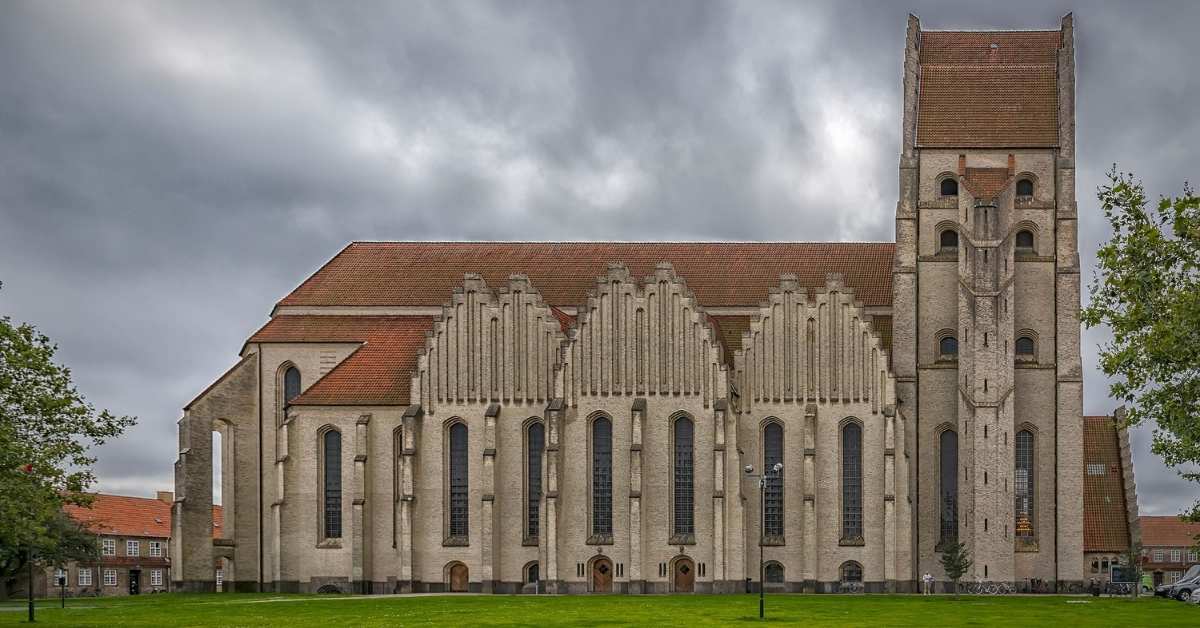
No discussion of Danish churches would be complete without mentioning Grundtvig’s Church in Copenhagen. This modern masterpiece was completed in the 20th century and is known for its striking expressionist style. The church’s towering facade, made of yellow bricks, gives it a unique presence in the city.
Inside, you’ll be greeted by a stunning nave that feels both grand and inviting. The large windows allow natural light to pour in, creating a serene atmosphere that enhances your experience. The church is dedicated to the Danish philosopher N.F.S. Grundtvig, who believed in the importance of education and community. The space often hosts concerts and cultural events, making it a lively part of the community.
3. Roskilde Cathedral
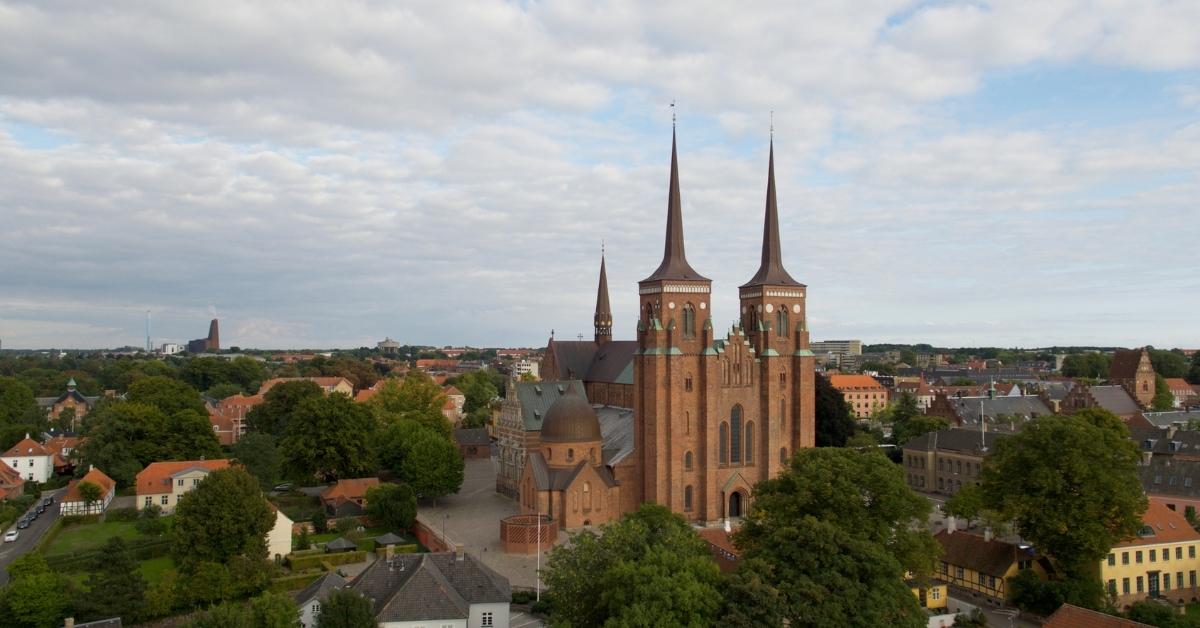
Traveling a bit outside of Copenhagen, you’ll find Roskilde Cathedral, a UNESCO World Heritage Site and the burial place of many Danish monarchs. This stunning red brick cathedral dates back to the 12th century and is one of the best examples of Gothic architecture in Denmark. As you approach, the twin towers stand tall against the skyline, inviting you to explore the history within.
Inside, you’ll be captivated by the beautiful stained glass windows and the ornate tombs of royal family members. The cathedral also has a lovely garden where you can relax and reflect on the rich history that surrounds you.
4. Aarhus Cathedral
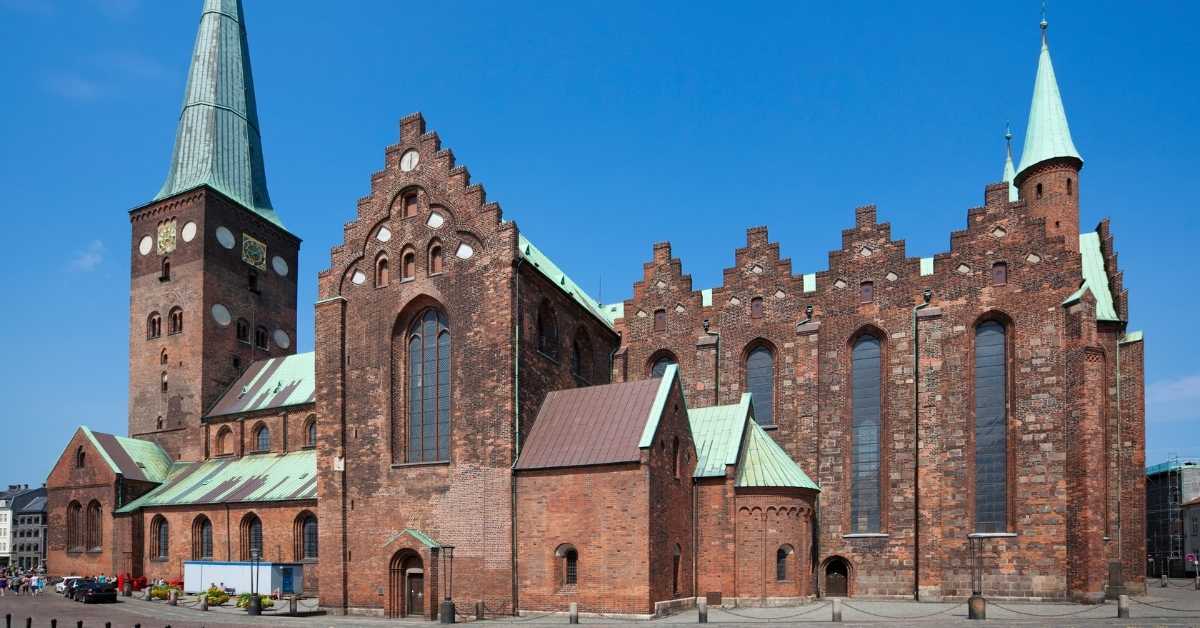
If your travels take you to Aarhus, don’t miss the Aarhus Cathedral, Denmark’s longest cathedral. This impressive building features a mix of Romanesque and Gothic styles, with its towering spires and intricate brickwork. As you step inside, the warm glow of the wooden interior creates a welcoming atmosphere, inviting you to wander and explore.
One of the highlights of Aarhus Cathedral is the stunning frescoes that adorn the walls. These colorful paintings, dating back to the 15th century, depict various biblical scenes and offer a glimpse into the artistic styles of the time. Be sure to take your time here; the beauty of the cathedral is something you’ll want to soak in fully.
5. St. Alban’s Church
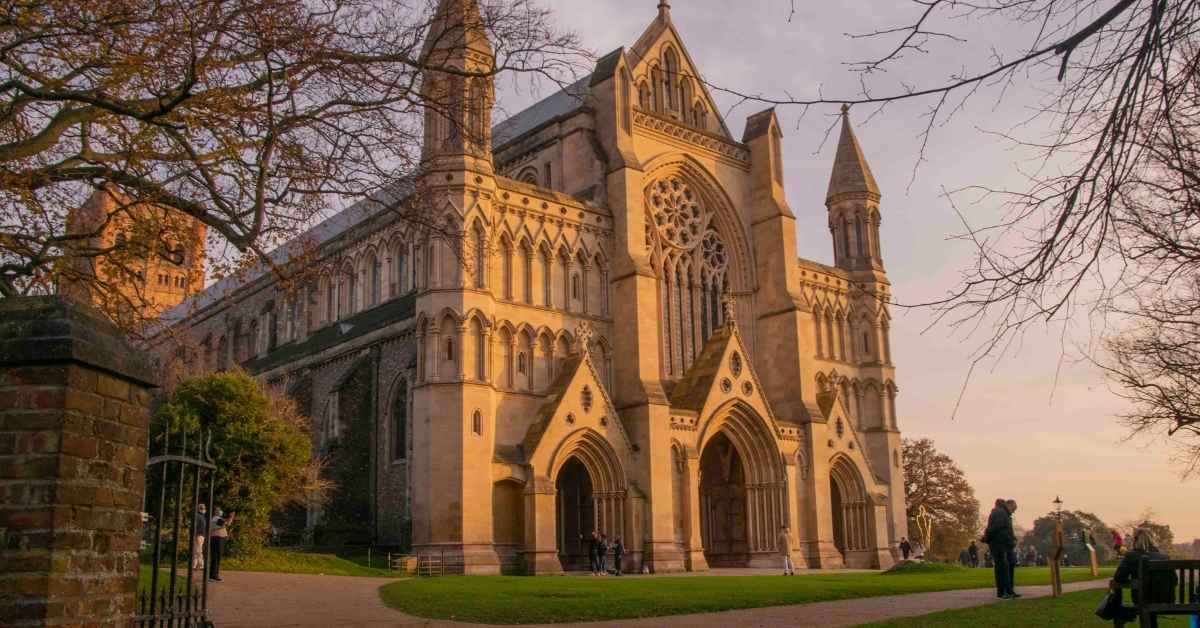
One of the most notable modern churches in Denmark is St. Alban’s Church in Copenhagen. While its Gothic Revival style gives it a traditional appearance, the church incorporates modern elements that reflect the changing nature of religious architecture.
Common Architectural Features of Denmark’s Churches
- Stained Glass Windows: These are one of the most striking features in many Danish churches. These windows often tell biblical stories and depict important historical events, creating a vibrant, colorful atmosphere inside the churches. The windows are not only beautiful but also serve as an educational tool, especially in times when most of the population was illiterate.
- Wood Carvings: Wood carvings are another significant feature of Danish churches, particularly in churches like Aarhus Cathedral. These carvings often depict religious scenes, saints, and symbolic motifs. Each piece of woodwork reflects the precision and creativity of the artisans who made them.
- Altarpieces: The altarpieces in many Danish churches are true masterpieces of religious art. They combine painting, carving, and gilding to create stunning visual displays. These altarpieces often depict important moments from the Bible, serving as focal points for worshippers and visitors alike.
Photographing Churches in Denmark
Denmark’s churches provide endless opportunities for photography, both inside and out. For exterior shots, timing is key. Early morning or late afternoon light can create stunning effects, especially when the sun illuminates the stone facades or casts shadows on the carvings. The golden hour, just before sunset, is particularly ideal for capturing the grandeur of these buildings.
Inside, the use of natural light through stained glass windows can create magical, colorful displays. Tripods can be helpful for low-light conditions, though it’s important to respect the rules and the sacred atmosphere of the churches.
Conclusion
Churches in Denmark are more than just religious buildings—they are cultural landmarks that reflect the country’s history, architecture, and spiritual evolution. For expats and visitors, exploring these churches offers a unique opportunity to connect with Denmark’s past and present. Whether you are drawn to the grand cathedrals of Copenhagen or the quaint rural chapels, each church tells its own story, blending art, architecture, and faith into a singular experience.
